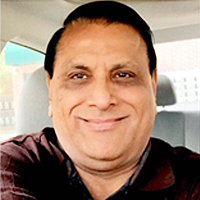Open bite malocclusion: An overview
Published on: 12th January, 2018
OCLC Number/Unique Identifier: 7379416963
The term open bite is referred as no contact between anterior or posterior teeth. The complexity of open bite is attributed to a combination of skeletal, dental and habitual factors. Etiology of open bite can be attributed to genetics, anatomic and environmental factors. However, the tendency toward relapse after conventional or surgical orthodontic treatment has been indicated. Therefore, open bite is considered one of the most challenging dentofacial deformities to treat. The aim of this article is to emphasize that early etiological diagnosis, dentofacial morphology and classification are essential to the successful outcome of the technical intervention. Failure of tongue posture adaptation subsequent to orthodontic and/or surgical treatment might be the primary reason for relapse of open bite. Prolonged retention with fixed or removable retainers is advisable and necessary in most cases of open bite treatment. The treatment of open bite remains a tough challenge to the clinician; careful diagnosis and timely intervention with proper treatment modalities and appliance selection will improve the treatment outcomes and long-term stability.
Fixed functional Appliances in Orthodontics-A review
Published on: 10th January, 2018
OCLC Number/Unique Identifier: 7379415494
Correcting class II malocclusion has always challenged an orthodontist owing to the complex and multifactorial aetiology. Age of patient and selection of the appliance plays an important role in the outcome of the treatment. Growth modification using functional appliances achieves stable results in class II patients. An orthodontist has wide variety of fixed and removable appliances for addressing a class II malocclusion. In this review article an attempt has been made to compile various available fixed functional appliances.
Clinical Case: Necrotizing Fasciitis of the neck after surgery of a Mandibular Radicular Cyst
Published on: 24th November, 2017
OCLC Number/Unique Identifier: 7379455745
Necrotizing fasciitis is a quickly progressing soft tissue infection that can be described with diffuse necrosis of subcutaneous tissue and superficial fascia. The cause of this can be infectious process of odontogenic origin, most commonly caused by mixed gram+ and gram- , aerobic and anaerobic microorganisms that are found in patients that are predisposed to infections. In a case of undiagnosed illness, there is a possibility of life threatening complications. This case analysis introduces the diagnostic criteria of the disease and treatment plan, encouraging doctors to devote more attention to prevention of infections.
Assessment of Oral Hygiene awareness in Geriatric patients attending OPD at ESIC Dental College, Rohini, New Delhi
Published on: 2nd November, 2017
OCLC Number/Unique Identifier: 7379483324
Aim: To assess and learn oral health awareness and hygiene practices among geriatric patients and also to identify important barriers in the establishment of oral health services, disease prevention and oral health promotion programmes for the same.
Materials and Methods: A total of 500 patients in the age group of 50 years and above were selected using random sampling technique. A self‑administered structured questionnaire including 20 multiple choice questions was given to them. The results were analyzed using percentage.
Results: The result of this study shows an acute lack of oral hygiene awareness and limited knowledge of oral hygiene practices. In Rohini, few people use tooth brush.
Conclusions: Hence, there is an urgent need for comprehensive educational programs to promote good oral health and impart education about correct oral hygiene practices.
Corticotomy facilitated correction of skeletal class II malocclusion
Published on: 26th October, 2017
OCLC Number/Unique Identifier: 7379412270
Selective alveolar decortication and periodontal augmentation with a bone graft were the two procedures used for the correction of the skeletal class II malocclusion in the case reported. A 25-year-old male patient presented with a skeletal class II malocclusion with increased bi-maxillary dento-alveolar protrusion, increased overjet, deep bite and imbricated and rotated mandibular incisors with bilateral presence of supernumerary teeth in the maxillary right and left premolar regions. Extraction of supernumerary in the maxillary right and left premolar region, and impacted UL5 was done. Pre-adjusted edgewise appliance, Roth’s prescription (0.022x0.028-inch slot), was bonded and a week later full thickness labial and lingual flaps were reflected in the maxillary and mandibular arches. Circumscribed corticotomy cuts was done and subsequently augmented with a bone graft. Orthodontic treatment was commenced immediately after surgery and orthodontic adjustments were performed every 2 weeks. The entire orthodontic treatment was completed in 9 months. Regional acceleratory phenomenon, triggered by the alveolar decortication, was responsible for the rapid correction of the malocclusion and the augmentation with the bone graft provided adequate bone volume for housing the teeth, thereby decreasing the possibility of subsequent relapse.
Drawings as learning aid for the human anatomy students’ based evaluation
Published on: 5th October, 2017
OCLC Number/Unique Identifier: 7286428771
Introduction: One of the essential requirements for efficient oral and maxillofacial surgeon is comprehensive knowledge in anatomy of head and neck regions. Authors believe that asking students to draw anatomical sketches will assist them to improve their imaginary memory for human anatomy. However, drawing, as learning aid in anatomy, has not been given enough attention as a learning aid for human anatomy.
Aim of the study: To determine dental students’ level of appreciation to drawings as practical learning aid in human anatomy.
Materials and methods: Seventy nine first year dental students in Ibn Sina University for Medical and Pharmaceutical Sciences College of Dentistry for the academic year 2016-2017, were requested to complete a questionnaire. The questions were mostly related to the importance of drawing in anatomy and its relation to Anatomy education. The participation in the questionnaire was optional.
Results: This study showed highly significant relationship between the ability to understand anatomy subject and the importance of drawing (P=0.006). It also showed highly significant relationship between the importance of drawings and giving clinical examples during lectures or anatomical labs (P=0.006). Furthermore, the results showed no significant relationship between the importance of drawings and the load of anatomical material, introduced in anatomical lectures and labs (P=0.639).
Conclusion: Anatomical drawings, from first year dental students’ perspective, are a useful learning tool and can relate to different aspects of proper education of human anatomy. Drawings can be implemented as practical tool in human anatomy curriculum for undergraduate dental education.
Osteogenic Accelerated OrthodonticsTM for treatment of a Skeletal Class II patient with moderate crowding
Published on: 18th September, 2017
OCLC Number/Unique Identifier: 7286353388
Introduction: A 17 years old male patient was treated at the University orthodontic department. He had the chief complaint of unaesthetic appearance of his teeth, mostly for anterior crowding. The pretreatment records showed a Class II skeletal relation, moderate upper and lower anterior crowding, 0.5mm of overbite and 2mm of overjet.
Materials and Methods: It was suggested Osteogenic Accelerated Orthodontics (OAOTM), the treatment option was very attractive to the patient although it required a surgical procedure and a more expensive type of treatment.
Results: The overall treatment time was 6 months, facial balance was improved and the final occlusal relationships from the functional and aesthetics perspective were good.
Conclusion: OAOTM is a good alternative to reduce extractions rate as it increases the scope of tooth movement and strengthen the periodontal tissues thru bone grafting, although these claims require more scientific data to be validated.
Low Level Light Therapy (LLLT): Penetration and Photobiomodulation
Published on: 31st July, 2017
OCLC Number/Unique Identifier: 7286425855
Mester et al., stated the laser effects in a review of their studies of 15 various biological systems, they observed the stimulating effect of low energy (in terms of J/cm2) laser and inhibiting effect of high energy laser and later reported the relationship of cumulative energy applied and the effects conforms to the Arndt-Schultz law. They concluded their experience with 875 healed cases and the results of their experiments had convinced them to recommend the use of lasers to stimulate wound healing [1].
Enamel demineralization with resin modified gic and conventional composite resin - a comparative in vivo study
Published on: 31st July, 2017
OCLC Number/Unique Identifier: 7286352515
Background & Objectives: Fluoride releasing bonding agents can help the orthodontist to minimize enamel demineralization independent of patient cooperation. This in vivo study was conducted to evaluate the efficacy of resin modified glass ionomer cement (RMGIC) on reducing enamel demineralization around orthodontic brackets and confirm the superior caries-preventive effect of RMGIC by assessing the mutans streptococci (S. mutans) in plaque samples in vitro.
Methods: 60 subjects (aged 14-20 years) scheduled to have premolar extractions as part of the orthodontic treatment plan were selected and randomly divided into 2 groups of 30 each (group 1: the brackets were bonded on the teeth using light cure composite resin and group 2: the brackets were bonded using RMGIC). Plaque scores (modification of plaque index by Silness and Loe) were recorded and plaque samples were collected before bonding, one week and one month after bonding. S.mutans colonies were recorded from the plaque samples inoculated on MSB agar plates, incubated under 95% N2 and 5% CO2 for 48 hours at 370C in a CO2 jar. After 1 month, the right maxillary and mandibular first premolars were debonded, extracted and depth of enamel demineralization area was estimated using polarized light microscope.
Results: After statistical analysis, a significantly higher mean depth of demineralized lesions was noticed in group 1 as compared to group 2. A significant difference between occlusal and gingival depth was seen only in group 2, thus illustrating a wedge effect. In group 1, a statistically significant increase in the mean colony forming units (CFU) of S.mutans has been noticed at different time intervals whereas in group2, a significant increase was observed only at 1month. Unlike at 1 month, a statistically significant difference in mean CFU between group 1 and group 2 has been observed at 1 week (P<0.05).
Conclusions: Enamel lesions adjacent to the bracket base on teeth bonded with the RMGIC were smaller than those on teeth bonded with a composite resin. The high “burst effect” of fluoride release for the first few days of RMGIC after bonding is confirmed by statistically significant reduction in CFU counts of S. mutans in plaque.
Esthetic recovery of permanent Mandibular Lateral Incisor using biological post after non-surgical healing of Periradicular Lesion: A Case Report
Published on: 22nd June, 2017
OCLC Number/Unique Identifier: 7286353205
Statement of the problem: Anterior tooth fracture, as a result of traumatic injuries, frequently occurs in dentistry. This leads to necrosis of pulp and periapical pathology. The goal of endodontic and restorative dentistry is to retain natural teeth with maximum function and pleasing esthetics.
Purpose of the study: This study aimed at proper reconstruction of extensively damaged teeth through the procedure known as “Biological Restoration.”
Materials and methods: Biological post obtained through natural, extracted teeth from another individual represents a low-cost option and alternative technique for the morphofunctional recovery of damaged anterior teeth that provides highly functional and esthetic outcomes.
Conclusions: This case report refers to the esthetics and functional recovery of mandibular left lateral incisor after non-surgical healing of periradicular lesion.




